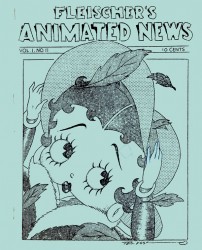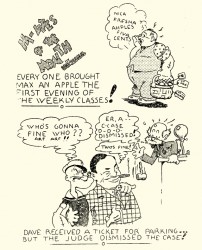Category ArchiveCommentary
Animation Artifacts &Commentary 03 Apr 2006 07:16 am
2 Beauties
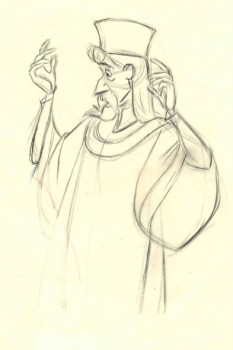 – My favorite site in the last week has definitely been Amid Amidi’s Cartoon Modern. He has been posting a lot of models from Rooty Toot Toot which are just amazing.
– My favorite site in the last week has definitely been Amid Amidi’s Cartoon Modern. He has been posting a lot of models from Rooty Toot Toot which are just amazing.
Then to break from that film, he gave us Eyvind Earle Bg models for Sleeping Beauty. The artwork posted has been beyond inspirational, and the comments given to Amid are also strong. I hadn’t realized how many people didn’t like Sleeping Beauty. I’d always thought Earle’s Bg styling and Tom Oreb’s angular characters were a perfect match. Since half of the design of tv animation and movies like Pocahontas have ripped into Eyvind Earle’s work, it interests me to see how many people blame him for the film’s failure – if there is one.
The site has provoked argument and information. It’s extraordinary always to see how other people think and feel about these classic films. I love reading it all, and the artwork is sensational. Kudos Amid. This site has become a must visit, daily.
Animation &Commentary 02 Apr 2006 08:00 am
Link later
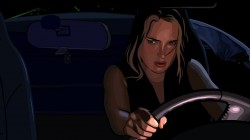 Richard Linklater will be back this year with another animated film. Animators, at least the ones I spoke to, seemed to take offense at his last effort, Waking Life. (Somehow, I was told this was not an animated film – rotoscope. I was surprised when it wasn’t nominated for the Oscar over Jimmy Neutron!!! How embarassing.) I thought it quite an interesting effort. This, to me, is no less animation than Peter Jackson’s King Kong or 2/3 of the other cgi efforts being released with cartoony characters and motion captured animation. What was different for the animated Waking Life, was that it was somewhat intelligent and spoke on an adult level. We have to believe, given Linklater’s work, A Scanner Darkly will be more in that direction.
Richard Linklater will be back this year with another animated film. Animators, at least the ones I spoke to, seemed to take offense at his last effort, Waking Life. (Somehow, I was told this was not an animated film – rotoscope. I was surprised when it wasn’t nominated for the Oscar over Jimmy Neutron!!! How embarassing.) I thought it quite an interesting effort. This, to me, is no less animation than Peter Jackson’s King Kong or 2/3 of the other cgi efforts being released with cartoony characters and motion captured animation. What was different for the animated Waking Life, was that it was somewhat intelligent and spoke on an adult level. We have to believe, given Linklater’s work, A Scanner Darkly will be more in that direction.
There are some interesting articles about this film, the problems and the history of its making.
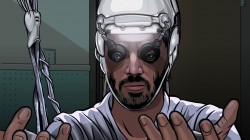 Wired Magazine has the most up-to-date and extensive of these and makes for the best read.
Wired Magazine has the most up-to-date and extensive of these and makes for the best read.
The Austin Chronicle had a good article in January.
There are a couple of mixed pre-reviews on Ain’t It Cool News.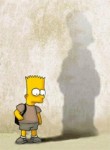
Personally, seeing an animated Keanu Reeves and Winona Ryder is all I’ll need to get me to plunk down $12 when it opens on July 7th.
~
- There’s an A P story in the NY Post detailing the Simpons trailer running with Ice Age 2 which announces the Simpsons feature for July 27, 2007.
~
- The Drawing Center at 35 Wooster St. in NYC has an exhibition called Analog Animations running through April 15. It includes a number of animated pieces done by 18 emerging artists who animate their drawings largely with “old-fashioned,†hand-drawn animation techniques rather than digital media.
Analog Animation artists include: Heather Boaz, Brett Budde, Deborah Davidovits, Almut Determeyer, John Dooley, Magdalena Fernandez, Mark Fox, Eunjung Hwang, Shin il Kim, Anna Kiraly, Kakyoung Lee, Jennifer Macdonald, Liza McConnell, Oscar Munoz, Serge Onnen, Hans Op de Beeck, Linda Pella, and David Virgien
Gallery hours:
Tuesday–Friday, 10:00 A.M.–6:00 P.M.
Saturday 11:00 A.M.–6:00 P.M.
Tel: 212-219-2166
Commentary &Hubley &UPA 28 Feb 2006 08:51 am
Reminiscing
A couple of things yesterday turned me toward the past.
- Three celebrities died over the weekend. I only had an actual communication with one of them. ABEL’S ISLAND was in the throes of new production. Tim Curry had been recorded and edited in London, and I was riding the high of his voice. We were about to record Heidi Stallings as Amanda, Abel’s wife and had one principal voice left to cast and record.
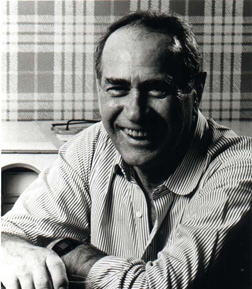 Darren McGavin was performing in a local off-Broadway production. His voice would be perfect for Gower, the frog, the only one to see Abel during his castaway year.
Darren McGavin was performing in a local off-Broadway production. His voice would be perfect for Gower, the frog, the only one to see Abel during his castaway year.
I searched high and low for an agent. I looked through all the guides. I called Actor’s Equity, SAG, NABET. No one had any link to him. Finally, in desperation I called the theater management and explained my position asking if they could kindly relay the message to Mr. McGavin’s agent or manager. It took a couple of days, and I received a call from Darren McGavin, himself. He was furious with me and took out his anger on the phone. The tone of the call was to ask how dare I go through the back door and insult him like this! I tried to be positive, I tried to be courteous, I tried to explain my low position. Eventually, he asked me to send him the script and he would consider it.
However, the bad footing I’d made could not be repaired, and I wanted no bad vibes to enter my film. Gower could have not a tad of anger in his existence. Lionel Jeffries, a brilliant character actor and director, was playing on Broadway opposite Peter O’Toole’s Henry Higgins. Lionel Jeffries voiced Gower brilliantly.
I’m truly sorry I did not get to work with Darren McGavin; I thought him a brilliant actor and a part of my mind’s ether. I’m sorry to see him gone.
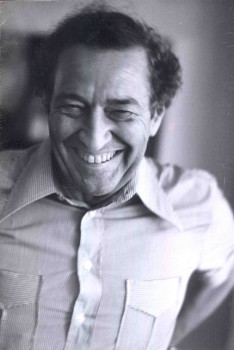 - T. Bosustow visited yesterday and I reviewed any thoughts or comments I had about UPA’s films and personalities with him. The session remained with me, and thoughts of UPA were present all day. Rooty Toot Toot kept replaying in my mind to the point where I have to search it out and watch it today.
- T. Bosustow visited yesterday and I reviewed any thoughts or comments I had about UPA’s films and personalities with him. The session remained with me, and thoughts of UPA were present all day. Rooty Toot Toot kept replaying in my mind to the point where I have to search it out and watch it today.
That film was an enormous influence on me.
I think it’s one of the top five animated films of all time and should be seen over and over by animators as a reminder of what their goals should be while working in this business.
If John Hubley had not had his company, Storyboard Productions, he still would have entered the animation pantheon because of this film.
Fortunately, those in LA will have an opportunity to see it projected on a big screen on March 26th at the Egyptian Theater.
My favorite photo of John Hubley.
(Click on images to enlarge.)
- To GOOGLE Rooty Toot Toot brings you to a small chatty comment on political radio broadcaster Wendy Wilde’s blog. There’s a short poem by Walt Kelly quoted there. It relates to the Blacklist permeating the entertainment business at the time of writing. (Maybe the film relates to this as well. Maybe both relate to what’s going on in the political air today.)
The rooty toot toot of the very minute,
The booty boot boot of the band,
The cutey cute cute of the less than astute,
Shivers and shudders the land.
I thank Kathryn Eagan for posting this poem on that site so I would get to see it.
Animation Artifacts &Commentary 26 Feb 2006 08:46 am
Chkn Li’l
It’s wonderful how things have grown with the internet age. Of course, there’s also more than a fair share of nonsense out there. Lots of misinformation, so one has to move cautiously in accepting much of it as gospel. Know your sources.
- Hans Perk has posted some excellent comments on my “Bookkeeping” page. He responds to a good question by Galen Fott about changes during the course of a production and the reflection of that on the charts. Hans also provides a link to a chart which calculates the variations from Acme to Disney field guides and back.
If you’re interested in the studio’s production charts I posted last week (with more to follow soon), I encourage you to read more.
-I also encourage you to go to Thad Komorowski’s website: Golden Age Cartoons. It’s a site I visit often; there’s plenty of history there.
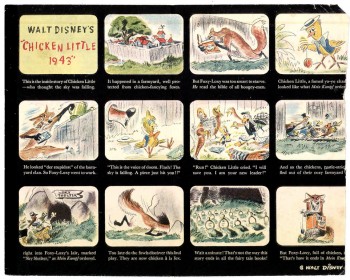
- Here’s a reprint ripped (literally) from the pages of LIFE Magazine, circa 1943. It represents a few of the storyboard(?) panels from Chicken Little, the Disney propaganda film. No it’s not the one with aliens – at least not aliens from outer space.
It was a wartime short warning us of the evil of the Nazis or at least of reading Mein Kampf. I didn’t realize these films needed publicity, too.
(Click on image to enlarge to a readable size.)
Commentary &Festivals 20 Feb 2006 08:05 am
Award
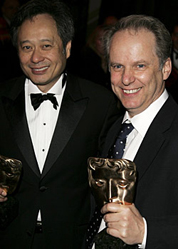 - As posted yesterday, the winners of the BAFTA Award for excellence in film were announced yesterday. Wallace and Gromit: The Curse of the Wererabbit was given the Michael Korda Award for Best British Film. It was an important award considering the competition, all excellent live action films.
- As posted yesterday, the winners of the BAFTA Award for excellence in film were announced yesterday. Wallace and Gromit: The Curse of the Wererabbit was given the Michael Korda Award for Best British Film. It was an important award considering the competition, all excellent live action films. 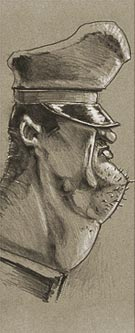 Congratulations to all of those involved at Aardman. Oscar’s next.
Congratulations to all of those involved at Aardman. Oscar’s next.
- Edited out of the show on BBC America was the award for Best Animated Short. The nominees were:
FALLEN ART – Jarek Sawko/Piotr Sikora/Tomek Baginski
FILM NOIR – Osbert Parker
KAMIYA’S CORRESPONDENCE – Sumito Sakakibara
THE MYSTERIOUS GEOGRAPHIC EXPLORATIONS OF JASPER MORELLO – Anthony Lucas/Julia Lucas/Mark Shirrefs
RABBIT – Run Wrake
The winner was FALLEN ART, a Polish CG animated film.
An interview with the film makers can be found here.
A summary of all the nominees, including the live-action shorts, can be found here.
Commentary &Festivals 19 Feb 2006 06:52 pm
BAFTAs
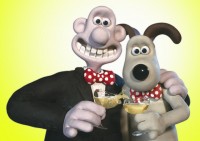 If you’re into awards shows, tonight at 8pm (repeated at 11pm), you can watch the BAFTA Awards live on tape. Handed out earlier today, Wallace & Gromit: Curse of the Wererabbit won as the Best British Film. Brokeback Mountain won many of the other awards.
If you’re into awards shows, tonight at 8pm (repeated at 11pm), you can watch the BAFTA Awards live on tape. Handed out earlier today, Wallace & Gromit: Curse of the Wererabbit won as the Best British Film. Brokeback Mountain won many of the other awards.
Commentary &Fleischer 03 Feb 2006 06:51 am
Grizzly men
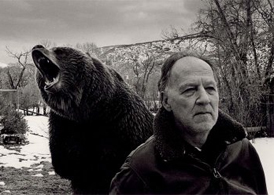 – If there was one injustice in this year’s Oscar nominations, it was the absence of Werner Herzog‘s film, Grizzly Man in the Documentary Feature category. Herzog has been, for me, the finest documaentary film maker in the past thirty years. This was not only the best documentary last year, it was one of the best films.
– If there was one injustice in this year’s Oscar nominations, it was the absence of Werner Herzog‘s film, Grizzly Man in the Documentary Feature category. Herzog has been, for me, the finest documaentary film maker in the past thirty years. This was not only the best documentary last year, it was one of the best films.
Herzog has completely changed and challenged the form, and the Academy continues to ignore him. Despite the success of this latest film, it somehow didn’t even make the shortlist for Oscar’s documentary contenders, but the cartoonish, March of the Penguins, will probably win! It’s confusing when art is ignored.
Grizzly Man is about a confused man who lives with bears. He photographed most of this documentary himself, before being killed, and Herzog assembles it. This continues Herzog‘s fascination with people on the fringe who are dedicated to their visions.
The film premieres tonight on the Discovery Channel at 8pm. Set your vcr’s.
After you watch that, go out and rent LA SOUFRIÈRE. It’s a longish short film, and will change what you think about documentaries.
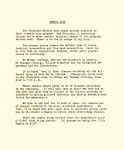 – Here’s another posting from the Fleischer Animated News, - the in-house organ of the Fleischer studio. (Sorry, but this paper is entertaining me just now!) It’s from 1939.*
– Here’s another posting from the Fleischer Animated News, - the in-house organ of the Fleischer studio. (Sorry, but this paper is entertaining me just now!) It’s from 1939.*
This is a notice that Max Fleischer is teaching classes in the studio. (I like that it indicates that there is no charge.)
It’s accompanied, here, by a Hal Seeger cartoon about the classes. The same cartoon comments on a parking ticket Dave must’ve received. Presumably, Hal Seeger was close enough with the brothers that he felt it was ok to jibe them.
click on these images to enlarge them.
*Corrected by Jerry Beck (see comments) as Oct 1935.
Commentary &Theater 30 Jan 2006 07:24 am
Scumbling some more
Monday rambling:
Tom Sito‘s excellent blog at the G7 site is really wonderful. If you don’t visit it regularly, I suggest you take a look. It features good, entertaining, informative reading daily. Here is just one small posting from the last few days:
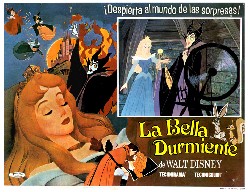 1959- Disney’s ” SLEEPING BEAUTY ” opened. Despite earning the fifth highest box office for that year it finished a million behind what it cost to make. The animation staff had swollen to its largest to finish the production. It’s disappointing box office soured Walt Disney on feature animation. Walking out of the premiere he went up to Milt Kahl and grumbled:” Well Milt, is THAT what I spent $4million for?!” After the film was finished the studio had a massive layoff, dropping from 551 to just 75. Artists employed since the Silly Symphonies found pink dismissal slips on their drawing tables when they came to work. One inker committed suicide. Staff level will not return to these same levels until 1990.
1959- Disney’s ” SLEEPING BEAUTY ” opened. Despite earning the fifth highest box office for that year it finished a million behind what it cost to make. The animation staff had swollen to its largest to finish the production. It’s disappointing box office soured Walt Disney on feature animation. Walking out of the premiere he went up to Milt Kahl and grumbled:” Well Milt, is THAT what I spent $4million for?!” After the film was finished the studio had a massive layoff, dropping from 551 to just 75. Artists employed since the Silly Symphonies found pink dismissal slips on their drawing tables when they came to work. One inker committed suicide. Staff level will not return to these same levels until 1990.
Tying this back to my overlong rant from yesterday: Last year, I’d seen a production Off-Broadway of Sleeping Beauty.  It was by the Young Vic Theater Company out of England and was written and directed by Rufus Norris. The audience was mixed from a one year old to grandparents. As I sat, the audience was noisy – some particularly loud teenagers behind me. However, as soon as the show started, they were spellbound and silent. The one year old had to be held high through the entire production.
It was by the Young Vic Theater Company out of England and was written and directed by Rufus Norris. The audience was mixed from a one year old to grandparents. As I sat, the audience was noisy – some particularly loud teenagers behind me. However, as soon as the show started, they were spellbound and silent. The one year old had to be held high through the entire production.
This was a reconstructed version of the tale. It felt both absolutely faithful and, at the same time, wholly revisionist. Actors, other than the leads, played multiple parts; all were delightful characters and completely original. The set was little more than a turntable with room for actors under the stage to stick their heads through that turntable. These heads played flowers and thorn bushes. There was a short, spiral staircase in the center of the turntable that was the castle.
The show was brilliant on a small budget completely pulled from imagination and daring. It inspired my animation for at least six months; even thinking of it again, now, gets me charged. You never know what you’ll find, but all forms of art can bring great influence to your work.
Animation Artifacts &Commentary 28 Jan 2006 09:30 am
Work
My suggestion yesterday was that we should stay linked to our roots.
In the past few years animation has taken so many turns that it’s hardly the same business anymore. Yet, oddly things haven’t really changed that much in my view. It’s still about telling a story.
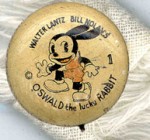 The TV work isn’t too far from the Hanna & Barbera material of the early 70′s except that it moves a lot faster – in Flash, so it looks more fluid. It’s all about how fast it can move not how a character should move.
The TV work isn’t too far from the Hanna & Barbera material of the early 70′s except that it moves a lot faster – in Flash, so it looks more fluid. It’s all about how fast it can move not how a character should move.
Back in the 70′s, I remember thinking that the H&B animation wasn’t too far from the silent film animation of the 20′s. It’s done in the same cookie-cutter way on an assembly line of sorts. It didn’t take long before the animation was sent Overseas. Animators stopped animating and did layouts, until the layouts were done Overseas. Now animators do the storyboards.
But wait! Today we have Flash. Does that go Overseas,too? I’m sure most of it does, but in New York, we have Curious Pictures doing a series with 100 Flash animators on staff. Big business. Back to the 70′s.
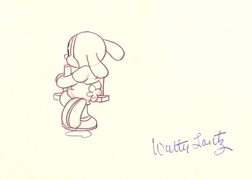 Theatrical works have definitely gotten smaller since Walt’s death. Animated features used to be special when they were released. I can still remember the thrill of going to Radio City Music Hall to see Sleeping Beauty on its opening week. I had the 1958 book, Art of Animation, by Bob Thomas, with all those wonderful stills. Before going to see it, I knew everything about the film.
Theatrical works have definitely gotten smaller since Walt’s death. Animated features used to be special when they were released. I can still remember the thrill of going to Radio City Music Hall to see Sleeping Beauty on its opening week. I had the 1958 book, Art of Animation, by Bob Thomas, with all those wonderful stills. Before going to see it, I knew everything about the film.
Does anyone own the books about the making of Hoodwinked or Chicken Little or Madagascar. Are there books on the making of these films? Some young animation enthusiast?
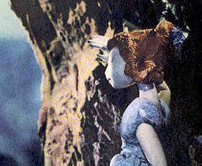 Don’t get me wrong, there are beautifully crafted films still being made. Just this last year we had the Wallace and Gromit feature and The Corpse Bride. One was visually arresting, the other offered genuine humor out of character animation and craft.
Don’t get me wrong, there are beautifully crafted films still being made. Just this last year we had the Wallace and Gromit feature and The Corpse Bride. One was visually arresting, the other offered genuine humor out of character animation and craft.
These were both puppet animation films. Though technically more sophisticated in the making, with many more advantages helping the animator, neither has moved beyond anything Jiri Trnka was doing 60 years ago. This is not a bad thing; it just illustrates my point.
We keep reinventing the wheel. We have to stay in touch with our past to see where we can move beyond it.
Commentary &Miyazaki 20 Jan 2006 09:16 am
Totoro
Notes:
The difference between animating from pose to pose and animating straight ahead is an enormous one. They are what they sound like:
- In one you create poses, key drawings, and you put drawings inbetween the poses. Tex Avery was all about his poses, as was Bob Clampett. In animating this way, you plan out every motion and submotion. It’s all organized and ready for an inbetweener to complete. The animator is in absolute control.
- In animating straight ahead, an animator starts at the beginning and gets where (s)he has to – one drawing at a time. It’s hard to control the shape of the character: they start small and grow large or start with a bigger head than they end with. It’s hard to control the exact placement of the character, and it’s hard to figure out how to have an inbetweener help you. But, for some animators, with straight ahead animation the character lives and breathes on its own. A life form starts to exist, and a singular relationship can form between animator and animation. This process was part of the reason Ub Iwerks left Disney’s studio – he did not want to be forced to use an inbetweener.
Last night I watched My Neighbor Totoro for the umpteenth 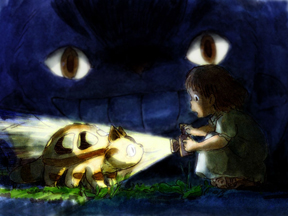 time on Turner Classic Movies. The new voices were sterling. Dakota Fanning is alway beyond professional; she has nuances in her voice that can’t be taught by an acting coach. Elle Fanning, Dakota’s younger sister, was the surprise. She brought such joy to this little animated girl, everything Miyazaki could have hoped for in the animation was there , echoed in the voice. A brilliant choice and brilliant voice production by Rick Dempsey. The kids are an enormous part of this film.
time on Turner Classic Movies. The new voices were sterling. Dakota Fanning is alway beyond professional; she has nuances in her voice that can’t be taught by an acting coach. Elle Fanning, Dakota’s younger sister, was the surprise. She brought such joy to this little animated girl, everything Miyazaki could have hoped for in the animation was there , echoed in the voice. A brilliant choice and brilliant voice production by Rick Dempsey. The kids are an enormous part of this film.
In last week’s screening of Laputa, Castle In The Sky, John Lasseter suggested that Miyazaki does the storyboards completely, himself. In this way he can control the shaping of the film. He works in chronological order and builds his story. In fact, Lasseter told the story of Miyazaki getting lost at one point, in that he didn’t know where his storyboard was going to take him.
Putting this in animation terms, it’s the equivalent of animating straight ahead. He knows where he has started; I’m sure he has a pretty good idea of where he wants to go, but he’s letting the story take him there on its own.
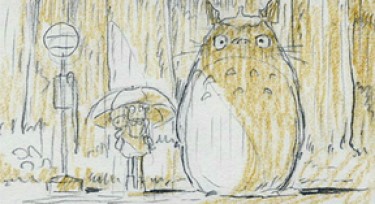 Suddenly, I realized all of Miyazaki’s works were composed of set-pieces. In the best of his films, like Totoro, these set-pieces are ingeniously controlled to build to an enormous whole, delicate and human. In Princess Mononoke, the set-pieces intertwine in a complicated web to create an epic vision of all of nature and human interaction with it.
Suddenly, I realized all of Miyazaki’s works were composed of set-pieces. In the best of his films, like Totoro, these set-pieces are ingeniously controlled to build to an enormous whole, delicate and human. In Princess Mononoke, the set-pieces intertwine in a complicated web to create an epic vision of all of nature and human interaction with it.
Now, I had a small insight into why and how they were structured this way.
This is not unlike Disney’s Bambi or Pinocchio. The adaptations of these two books forced this structure on the final films, but the enormous skill with which they were devised into final films is extraordinary. (Animators usually talk about the excellence of the visual aspects of these two films, but the story is just as wonderful.
In films I like less, such as Laputa, these set pieces – to me – feel episodic. There’s always the stunning visual imagery; the individual parts can be magnificent (such as the chase in this film with the railroad tracks and bridges collapsing behind the vehicles), but in the end it can get tiresome.
All of Miyazaki‘s films, however, have a singular vision – an auteur at the height of his craft. We know a lot about him, just by viewing his films. It is miraculous that one person (with an army behind him) could have done so many great works in animation and, at the same time, have had such success in the marketplace.
It’s a pleasure to have been given a small insight into his process and to see that it has such an enormous effect on the final film. Thank you John Lasseter for your introduction.
